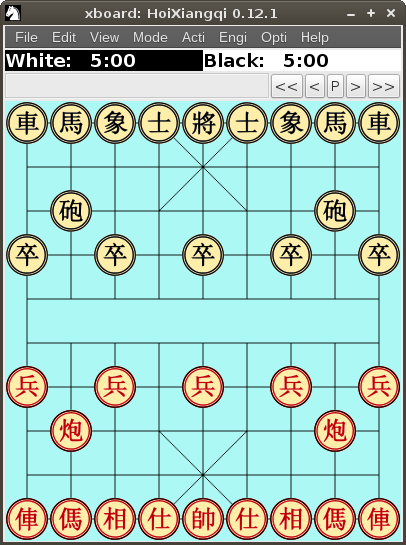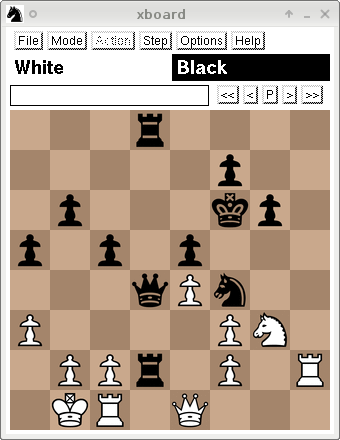

The document that exists now (chess-engines.html) evolved directly from the original email reply I sent to Shay. Over the years I received so many requests for this information that I was more or less forced into documenting and extending the ad-hoc engine protocol to support them. I think the first person to ask was Shay Bushinsky, in November 1994.
XBOARD CHES HOW TO
Because the GUI and the chess engine are separate programs, several people thought of the idea of connecting their own chess programs in place of GNU Chess, and they began to email me asking how to do it. Originally, xboard and WinBoard were simply graphical user interfaces for GNU Chess, then for GNU Chess and Internet chess servers. Tim Mann in an Interview by Frank Quisinsky, April 2000 : While the Universal Chess Interface is somewhat more popular today, the Chess Engine Communication Protocol protocol is preferred by some because it allows greater flexibility for the engine (for instance, in pondering). Many other GUIs support the protocol, which is based on text commands, while requiring the engine to keep the state of the game internally.
XBOARD CHES WINDOWS
run ( main ()) class GUI supporting the protocol is known as XBoard or WinBoard, being for Unix (Posix) or Windows operating systems, respectively. get ( "seldepth", 0 ) > 20 : break await engine. get ( "pv" )) # Arbitrary stop condition. Board ()) as analysis : async for info in analysis : print ( info. popen_uci ( "/usr/bin/stockfish" ) with await engine. Import asyncio import chess import chess.engine async def main () -> None : transport, engine = await chess. Returns the expectation value, where a win is valued 1, a draw is Returns the relative frequency of losses. Wdl ( wins : int, draws : int, losses : int ) ¶ Gets the Wdl from the point of view of the givenĬolor.

The point of view ( chess.WHITE or chess.BLACK). But it is recommended to use the providedįields and methods instead.

There is a total order defined on centi-pawn and mate scores.ĭeprecated since version 1.2: Behaves like a tuple wdl ( *, model : Literal = 'sf', ply : int = 30 ) → ¶ Gets the score from the point of view of the given color. Gets the score from Black’s point of view. Gets the score from White’s point of view. PovScore ( relative :, turn : chess.Color ) ¶Ī relative Score and the point of view. Others: tbhits, currmove, currmovenumber, hashfull,Ĭpuload, refutation, currline, ebf (effective branching factor), Seldepth, time (in seconds), nodes, nps, multipv InfoDict ( * args, ** kwargs ) ¶ĭictionary of aggregated information sent by the engine.Ĭommonly used keys are: score (a PovScore), You can permanently apply a configurationĬlass chess.engine. The previous configuration will be restored after theĪnalysis is complete. A dictionary of engine options for theĪnalysis. INFO_REFUTATION, INFO_CURRLINE, INFO_ALL or anyīitwise combination. INFO_NONE, INFO_BASE (basic information that is Info – Selects which information to retrieve from theĮngine. To the previous game (e.g., ucinewgame, new). Will automatically inform the engine if the object is not equal An arbitrary object that identifies the game. Will returnĪ list of at most multipv dictionaries rather than just a single abstract async play ( board: chess.Board, limit:, *, game: Optional = None, info: =, ponder: bool = False, draw_offered: bool = False, root_moves: Optional] = None, options: Mapping]] = ' ) → Union, ]Īnalyses a position and returns a dictionary ofīoard – The position to analyse. Protocol for communicating with a chess engine process.

popen_uci ( r "C:\Users\xxxxx\Downloads\stockfish_14_win_圆4\stockfish_14_win_圆4_avx2.exe" ) board = chess.


 0 kommentar(er)
0 kommentar(er)
